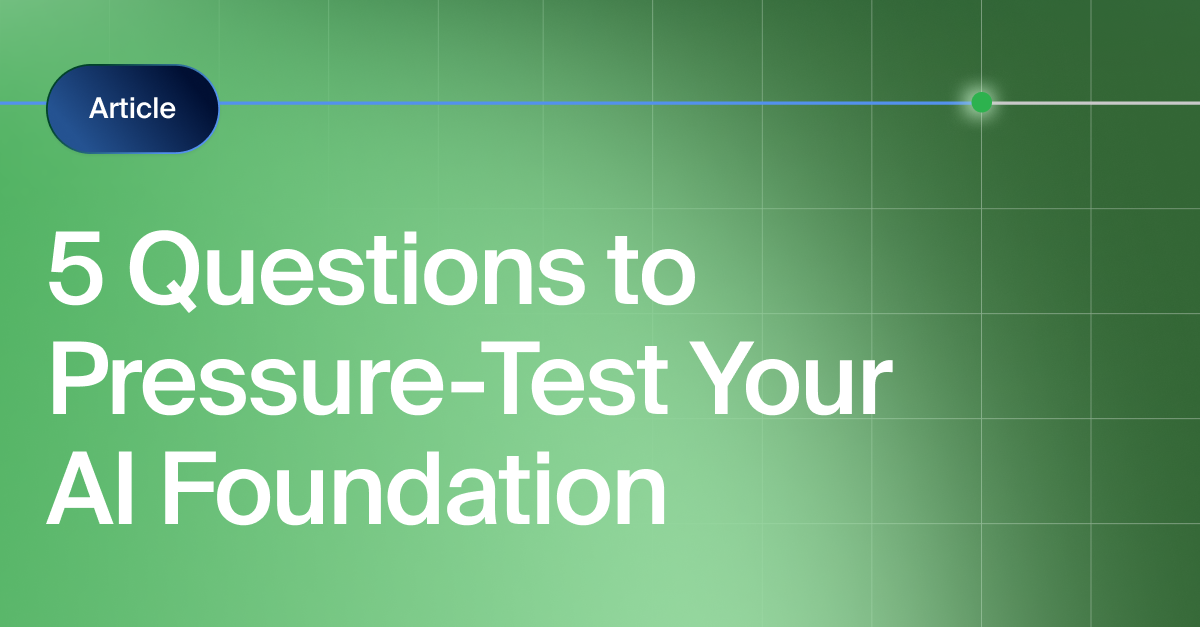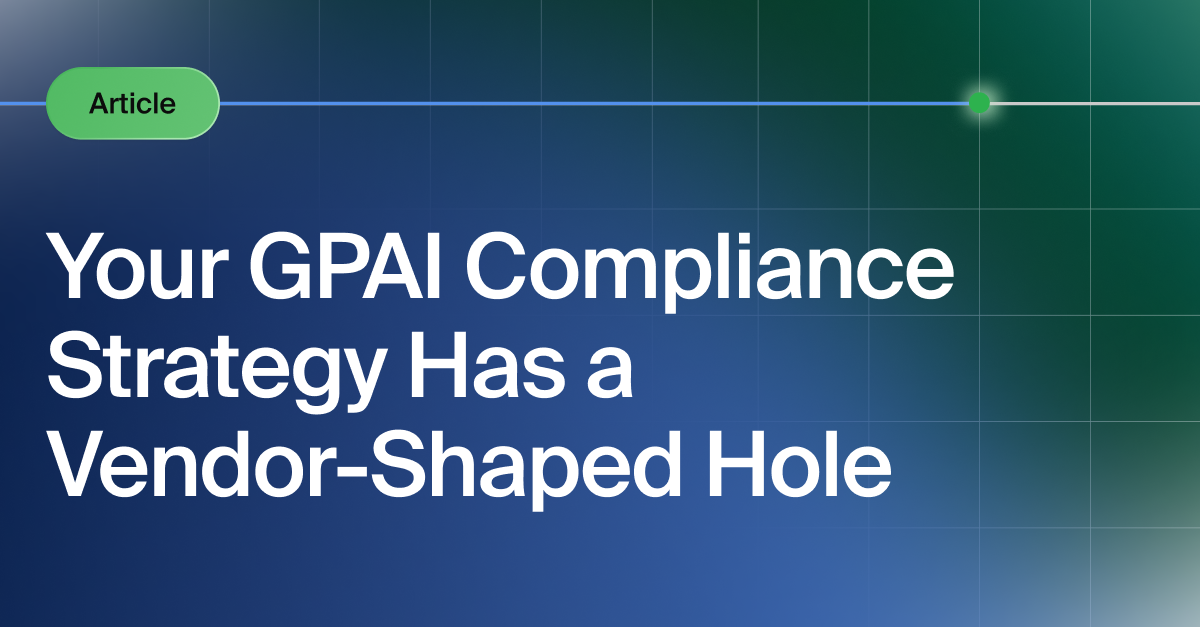5 Questions to Pressure-Test Your AI Foundation
Here, we outline five questions that help data leaders assess whether their systems, people, and processes are truly ready for AI, covering traceability, sensitive data handling, infrastructure strain, data quality, and ROI.


Get the Best of Data Leadership
Stay Informed
Get Data Insights Delivered
We’ve spent the last year in conversation with enterprise data leaders, many of whom are being asked to scale AI faster than their systems, teams, or governance frameworks can handle. The same themes kept surfacing: uncertainty around sensitive data, inconsistent observability, and the mounting pressure to show ROI.
That’s the insight that inspired us to build the AI Readiness Audit. A quick, 5 question framework that helps enterprise leaders pressure-test the foundation under their AI programs.
If you’re responsible for scaling AI in a complex organization, these five questions will help you get to the heart of your real risk factors.
1. Can your team trace every AI decision back to the data that informed it?
If you can’t explain it, you can’t govern it.
One of the most common concerns we hear from data leaders is the lack of visibility into how AI decisions are made. When an agent makes a pricing recommendation, pulls the wrong customer data, or triggers a workflow: can your team trace that action back to the exact data inputs?
AI systems are dynamic and decentralized. You're not just managing one model with one dataset. You’re managing internal tools, vendor agents, and bespoke applications pulling from dozens of sources across the enterprise.
To build trust (and to prepare for internal reviews or external regulations) you need full lineage. That means:
- Seeing which data sources were accessed
- Understanding which prompts or users triggered actions
- Mapping agent behavior across environments
Without traceability, even well-meaning teams are flying blind.
2. Do you understand how and where sensitive data flows into your models?
Sensitive data isn’t just about compliance anymore. It’s about exposure.
As AI systems scale, they’re touching more data than ever: customer records, internal strategy docs, company IP. The challenge isn’t just protecting that data. It’s understanding where it lives, who’s accessing it, and how it’s being used.
That means two things:
- Classifying sensitive data (PII, PCI, PHI, IP, etc.) at the source
- Auditing agent behavior and access patterns in real time
Security and privacy teams aren’t just asking whether an agent is credentialed. They want to know what it did, when it did it, and what data it touched. And they need that visibility across both vendor systems and in-house apps.
The bottom line: If an agent can take action on your behalf, your trust controls need to be more robust than ever.
3. Are your systems (and teams) ready for AI usage patterns?
AI doesn’t just use data. It stresses your infrastructure.
Enterprise data systems weren’t built for 24/7 agent access. Even well-architected warehouses or data lakes can buckle under dynamic prompts, parallel queries, and real-time lookups, especially when those agents are granted broad access.
Teams need to assess:
- Which systems will get hit the hardest
- Whether brittle integrations are silently failing
- How to detect and respond to usage patterns that weren’t part of the original plan
This also applies to people. Are your teams equipped to monitor AI systems? Can they tune performance, audit usage, and investigate breakdowns?
4. Do you have a reliable way to assess and maintain data quality at scale?
Model autonomy doesn’t eliminate data quality problems. It magnifies them.
AI agents don’t check your work. They don’t pause when a dataset looks off. They act on whatever data they’re given. And if that data is stale, duplicated, or inconsistent, the results can be misleading at best and damaging at worst.
You can’t rely on legacy QA processes or isolated checks. You need a system that:
- Monitors quality across all critical inputs
- Surfaces issues before they reach production systems
- Provides business users with confidence in the outputs
This is especially important when agents span multiple systems, vendors, or data domains. Quality needs to be measurable, visible, and comparable, even across different tools or teams.
5. Have you tied your AI initiatives to a measurable business outcome?
AI that doesn’t move a KPI is just an experiment.
Executives are granting teams a rare window to test, build, and scale new AI systems. But that window is closing. Every team will be expected to prove ROI.
That starts with clarity. What business outcome is this system meant to improve?
For example, one enterprise used an agent to assist with collections outreach. Their success metric wasn’t vague efficiency, it was a 2.5x increase in daily outreach volume per agent, with measurable impact on collections.
Whether you use a before-and-after comparison or a structured A/B test, define your goals upfront. If your AI investment doesn’t show results, it won’t survive the next budget cycle.
The most advanced models won’t save you if the foundation beneath them is brittle. The AI Readiness Audit helps leaders ask the hard questions now, so they don’t end up firefighting later.
Want a deeper dive into the audit framework? You can watch the full conversation with Bigeye co-founder Kyle Kirwan and Robert Long, Chief Product and Technology Officer at Apptad, here.
Monitoring
Schema change detection
Lineage monitoring



.png)
.jpeg)

